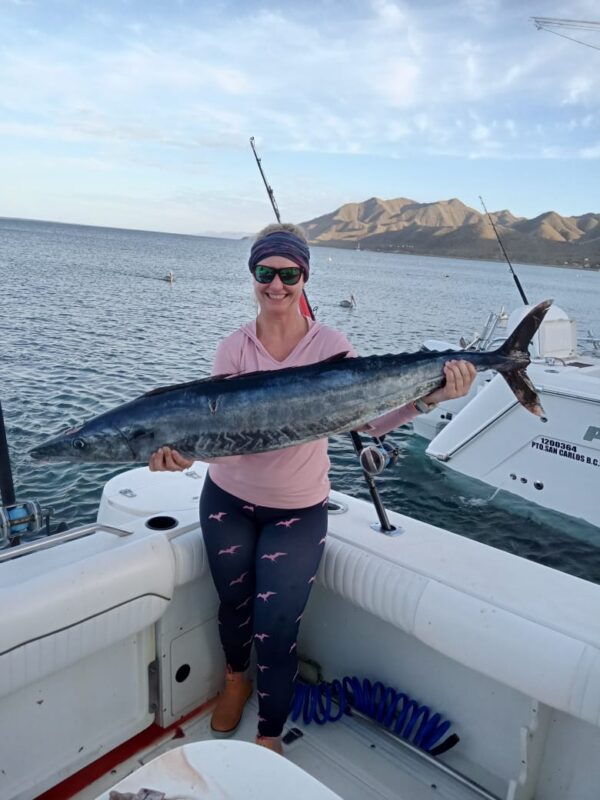The feeding behavior of wahoo (Acanthocybium solandri), also known as the “ono” in Hawaiian waters, is a fascinating subject in the world of marine biology and sport fishing. Wahoo are a highly sought-after game fish due to their incredible speed and the challenging nature of catching them. Their feeding habits play a significant role in their allure for anglers.
Wahoo are pelagic predators, which means they primarily inhabit the open ocean rather than staying close to the coastline. They are known for their impressive swimming speed, capable of reaching up to 60 miles per hour. This speed is a key element in their feeding behavior.
One of the primary feeding behaviors of wahoo is their opportunistic hunting strategy. They are known to be voracious predators that often hunt near the surface and just below it, where they can ambush schools of smaller fish. Their streamlined bodies, sharp teeth, and powerful jaws make them efficient hunters. Wahoo are known to target a wide variety of prey, including smaller fish like mackerel, squid, and flying fish, which are abundant in their offshore habitats.
Wahoo are also known for their migratory behavior. They follow the warm oceanic currents, which carry their prey species, to different parts of the world’s oceans. This behavior allows them to find new hunting grounds and access an abundance of food sources throughout the year. Their migration patterns can vary, but they are often found in tropical and subtropical waters.
Another interesting aspect of wahoo feeding behavior is their solitary nature. Unlike some other pelagic predators, wahoo tend to hunt alone rather than in schools. They are often solitary hunters, which can make them challenging for anglers to locate and catch. Anglers must have the right equipment, tactics, and knowledge of wahoo behavior to increase their chances of a successful catch.
Wahoo are known for their preference for live bait and lures. Anglers often use high-speed trolling techniques to mimic the movement of prey fish. The wahoo’s incredible speed and aggressive nature make them respond to these artificial presentations. When a wahoo strikes a bait or lure, they exhibit impressive acrobatics, leaping out of the water, and using their speed to evade capture. This makes them a thrilling target for sport fishing.
Wahoo are also known to have periods of increased activity during certain times of the day. These periods, often around dawn and dusk, coincide with the feeding patterns of their prey. This information is valuable for anglers looking to improve their chances of a successful catch.
In conclusion, the feeding behavior of wahoo is a fascinating subject that combines elements of speed, opportunistic hunting, migratory patterns, and solitary hunting. These factors make wahoo a challenging and exciting target for sport fishermen. Understanding the habits and preferences of wahoo is crucial for those looking to pursue this remarkable pelagic predator in the world’s open oceans. Whether it’s the thrill of the chase or the delicious taste of their flesh, wahoo continue to captivate both anglers and marine biologists alike.

